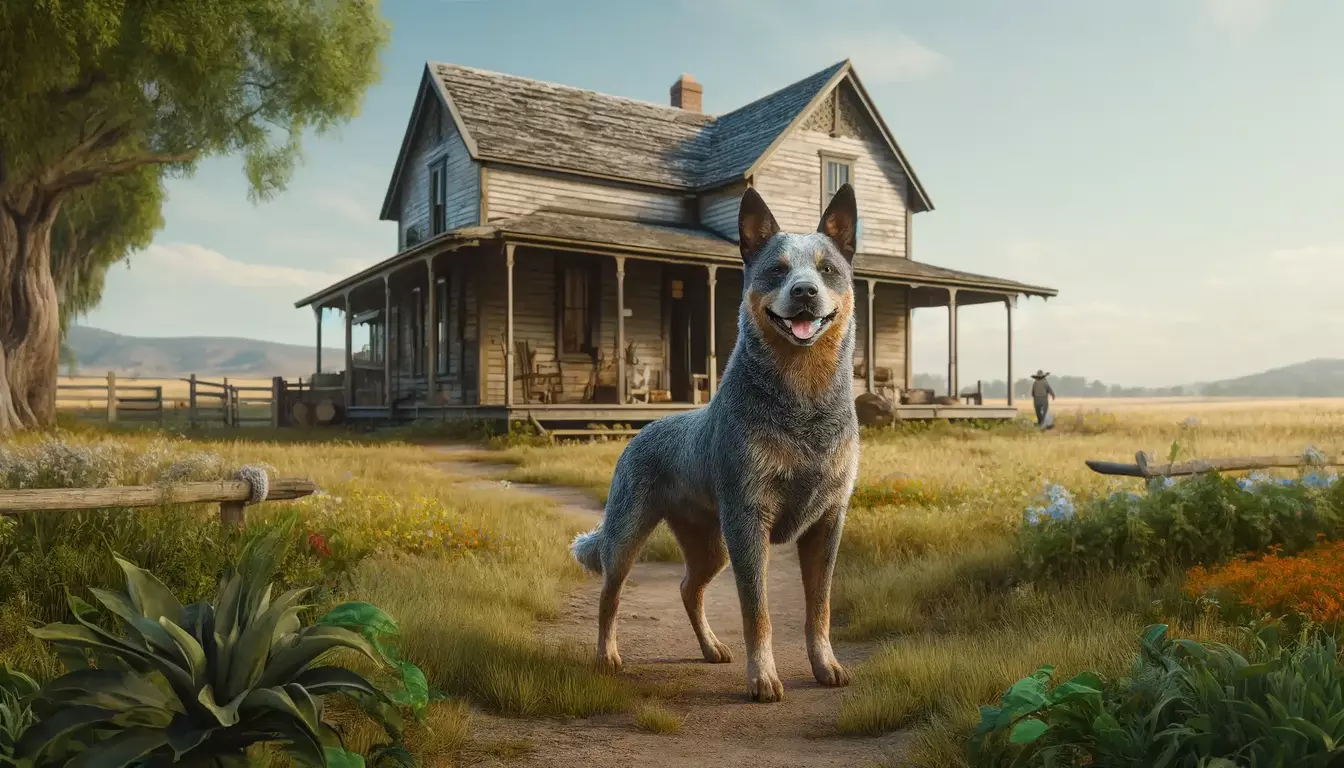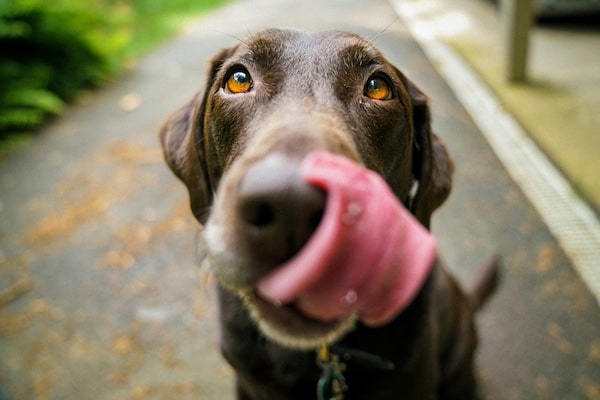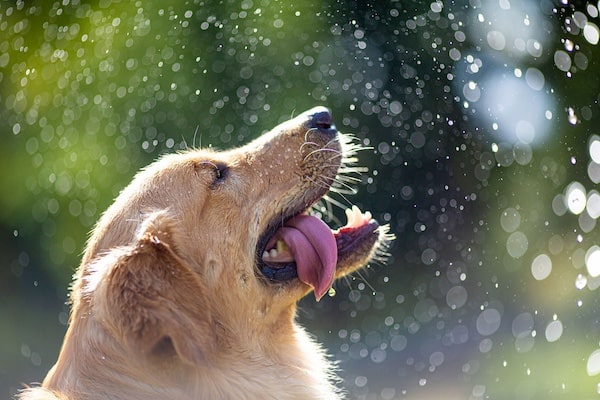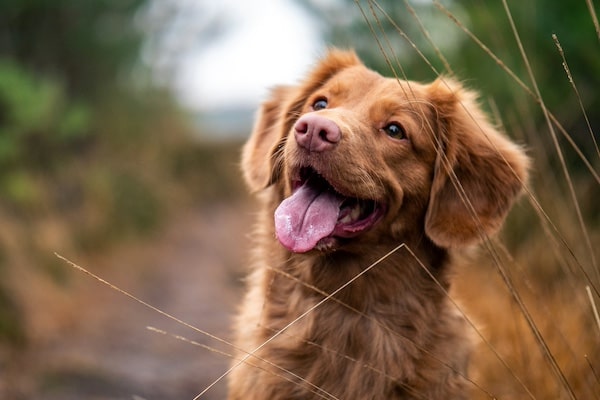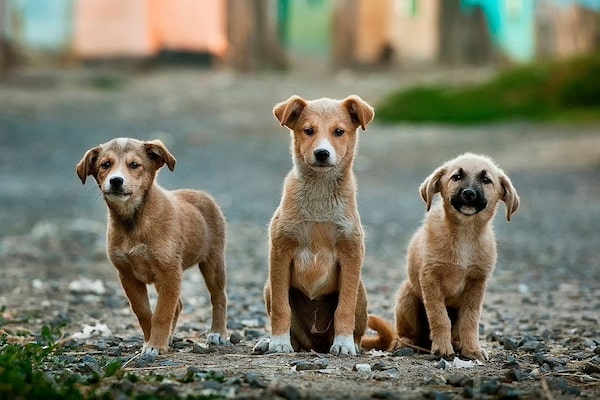The Australian Cattle Dog stands as a paragon of resilience and intelligence, tailor-made for herding and high-energy tasks. This breed, renowned for its sharp mind and robust health, thrives in environments that challenge both body and mind.
Ideal for active owners, these dogs possess a loyalty that is both profound and enduring. However, managing their boundless energy and cleverness requires knowledge and patience. This guide offers vital insights into their unique traits and behaviors, providing prospective owners with essential strategies to harness their potential. Understanding the nuances of this breed ensures a harmonious and rewarding relationship.
Australian Cattle Dog – Size & Life Expectancy
Height
18-20 inches (male)
17-19 inches (female)
Weight
35-50 pounds
Life Expectancy
12-16 years
About the Australian Cattle Dog
The Australian Cattle Dog, a breed distinguished by its resilience and acute intelligence, originated in Australia during the 19th century. Breeders aimed to create a dog capable of handling the harsh conditions and vast expanses of the Australian outback. The breed emerged from a meticulous mix of native dingoes with imported herding dogs, notably the blue-speckled Scottish Collie and the resilient Dalmatian. The resulting hybrid was a dog uniquely suited to driving cattle over long distances under challenging conditions. Early breeders, particularly Thomas Simpson Hall, played a pivotal role in developing what would become known as the Australian Cattle Dog.
The breed’s initial use was explicitly in herding cattle, capitalizing on its stamina, herding instinct, and protective nature. The Australian Cattle Dog was bred to nip at the heels of cattle (hence the nickname “heeler”), proving indispensable in moving livestock across rugged terrain. Their ability to work independently, combined with their fierce loyalty and protective demeanor, made them invaluable to Australian ranchers.
Modern-Day Status and Popularity
Today, the Australian Cattle Dog is celebrated not only for its herding capabilities but also for its versatility and adaptability in various roles. Recognized officially by major kennel clubs around the world, this breed has found its place not just on farms but also in homes as beloved pets. Its intelligence and energy make it an excellent candidate for dog sports, including agility, obedience, and flyball, showcasing the breed’s athleticism and learning capacity.
The breed’s popularity extends beyond the pastoral communities, resonating with active individuals and families who can match the Australian Cattle Dog’s energy levels and need for mental stimulation. These dogs are known for their commitment to their owners, often forming a strong, almost unbreakable bond with one person in particular. This loyalty, coupled with their protective nature, makes them excellent companions, albeit sometimes wary with strangers.
Typical Owners and Today’s Challenges
The typical owners of Australian Cattle Dogs today are those who appreciate a high-energy companion that requires and enjoys a lot of physical and mental activity. They are best suited for environments where they can thrive through engagement and tasks, whether in a sporting arena or a rural setting where they can roam and work. Urban owners of Australian Cattle Dogs must make a concerted effort to provide sufficient exercise and stimulation to manage the breed’s vigor and prevent potential behavioral issues.
While their intelligence and energy are among their greatest assets, these traits can also pose challenges in a domestic setting. Without proper training and regular engagement, an Australian Cattle Dog may become bored and destructive. Hence, they are not typically recommended for first-time dog owners or those unfamiliar with active breeds.
As of today, the Australian Cattle Dog continues to be a symbol of endurance, loyalty, and intelligence. Their storied history as cattle herders in the expansive Australian outback offers a fascinating glimpse into the breed’s development, a testament to their essential role both in the past and in the modern day. Owners and enthusiasts must understand the breed’s needs and history to provide the best care and ensure these remarkable dogs lead fulfilled, balanced lives.
Traits & Characteristics of the Australian Cattle Dog
- Highly Intelligent: Australian Cattle Dogs are known for their quick learning ability and problem-solving skills.
- Energetic and Vigorous: They require regular, intense physical exercise to stay healthy and content.
- Loyal and Protective: They develop strong bonds with their owners and can be protective of their family.
- Independent Thinkers: This breed is known for its ability to work autonomously, especially in herding or task-oriented situations.
- Alert and Watchful: These dogs are naturally vigilant, making excellent watchdogs.
- Stubborn and Determined: Their strong will can be a challenge during training without consistent and firm handling.
- Adaptable: While bred for working, they can adapt well to different living situations when their exercise and mental stimulation needs are met.
Owning an Australian Cattle Dog
The Australian Cattle Dog, a breed that combines intelligence with resilience, is an excellent choice for active owners looking for a loyal and energetic companion. This guide provides potential owners with important insights into caring for these robust animals, from their health and exercise needs to grooming, nutrition, and training.
Health
Australian Cattle Dogs are generally healthy, but like any breed, they are prone to specific health issues. Common conditions include hip dysplasia, progressive retinal atrophy, and deafness. To maintain their health, regular vet check-ups are crucial. Owners should ensure their pets receive all necessary vaccinations and preventive treatments for parasites. It’s also advisable to have genetic screening for the breed’s common hereditary diseases. A proactive approach to health monitoring contributes significantly to a longer, more vibrant life for these dogs.
Exercise
The exercise needs of the Australian Cattle Dog are extensive, reflecting their working breed heritage. These dogs thrive on physical activity and require at least one to two hours of vigorous exercise daily. Ideal activities include running, hiking, and agility training, which not only burn energy but also keep their minds engaged. Owners should incorporate interactive games like fetch and frisbee to fulfill the breed’s exercise requirements. Regular, structured exercise prevents behavioral issues and promotes physical and mental well-being.
Grooming
The coat of the Australian Cattle Dog is short but dense, designed to protect them from harsh weather conditions. Their grooming needs are moderate. Weekly brushing is sufficient to remove dirt and loose fur, and maintain the coat’s natural sheen. During shedding seasons, more frequent grooming may be necessary to manage the increased hair loss. Baths should be given only when necessary, as overwashing can strip natural oils from their coat. Regular nail trimming and ear cleaning are also important to prevent overgrowth and infection, respectively.
Nutrition
Proper nutrition is vital for the Australian Cattle Dog’s health and energy levels. High-quality dog food that meets the nutritional levels established by the AAFCO provides a good dietary foundation. Protein-rich foods support their muscular build and high energy, while avoiding excess calories that can lead to obesity. Owners should avoid foods with fillers like corn and wheat and excessive chemical preservatives. Also, some common human foods such as chocolate, grapes, and onions are toxic to dogs and should be strictly avoided.
Training
Training an Australian Cattle Dog can be relatively easy due to their high intelligence and eagerness to please. However, their independent nature sometimes poses a challenge, necessitating a consistent and firm training approach. Early puppy training and socialization are essential to curb their dominant tendencies and ensure they grow into well-adjusted adults. Socialization helps mitigate their wariness around strangers and reduces potential aggression. Positive reinforcement techniques, such as treats and praises, are effective in training this breed, promoting a trusting relationship between the dog and its owner.
Understanding and meeting the needs of an Australian Cattle Dog can be rewarding, as they make incredibly devoted and capable companions when properly cared for.
The Australian Cattle Dog Standard
The Australian Cattle Dog, known for its agility, intelligence, and sturdiness, adheres to a precise breed standard that reflects its heritage as a working dog. This standard ensures that the physical and behavioral traits necessary for their traditional roles in herding and ranch work are maintained.
General Appearance
The Australian Cattle Dog is a robust, muscular, and compact breed, exhibiting strength and agility without any trace of clunkiness or fragility. Its build contributes to its ability to move quickly and with purpose, important for a dog that must often control and move livestock. The overall balance of the body is slightly longer than tall, ensuring stamina and agility.
Head and Skull
The breed features a broad skull that flattens to a slight but definite stop between the eyes, transitioning into a powerful and muscular muzzle. The jaws are strong and well-defined, equipped with scissors bite where the upper teeth closely overlap the lower teeth. This configuration is essential for grasping and holding.
Eyes and Ears
Eyes are oval, of moderate size, and dark brown, with an alert and intelligent expression. The ears are pricked, small to medium in size, set wide apart at the crown of the head, and point slightly outward, giving the dog a look of constant attentiveness.
Body
A strong neck and body are crucial, with a level back and a muscular loin. The chest is deep and broad, showing ample lung space, while the ribs are well-sprung but not barrel-shaped. This conformation supports a strong respiratory system, vital for a working dog.
Legs and Feet
The forelegs are straight and parallel, with round, arched toes on compact feet. The hindquarters are particularly strong, with well-muscled thighs and short, sturdy hocks, enabling explosive power and rapid acceleration necessary for herding activities.
Coat and Color
The coat is a standout feature, being weather-resistant with a double layer; the outer coat is short and straight, and the undercoat is dense. Colors are typically blue or red speckle. The blue may be mottled or speckled with or without other markings, while the red dogs are evenly speckled and may have darker red markings on the head.
Tail
The tail is set moderately low, following the slope of the back. It features a slight curve, reaching approximately to the hock, and is held low unless the dog is excited or moving.
Temperament
Behaviorally, the Australian Cattle Dog is known for its courageous, tireless, and vigilant nature. It is an extremely loyal breed, protective of its owners and wary of strangers, making it an excellent watchdog. Despite its tough exterior, it is capable of great affection and fidelity to its duties, making it a prized worker as well as companion.
The breed standard for the Australian Cattle Dog underscores its function as a versatile and enduring herder, capable of withstanding both physical and mental challenges. Adhering to this standard ensures the preservation of the breed’s quality and capabilities.
Australian Cattle Dog – FAQ
Explore the world of the Australian Cattle Dog with our comprehensive FAQ section. Here, you’ll find answers to common questions about the breed’s characteristics, care needs, and suitability as a pet, helping you discover whether this energetic and intelligent dog is the right companion for you.
Alternatives to an Australian Cattle Dog
Several dog breeds share similarities in size, traits, and characteristics with the Australian Cattle Dog. These breeds typically embody attributes such as intelligence, energy, and a sturdy physique, making them suitable for active roles and environments.
The Border Collie, renowned for its exceptional intelligence and agility, mirrors the Australian Cattle Dog in its herding capabilities and high energy levels. Both breeds require significant mental and physical stimulation to remain content and are highly trainable, excelling in dog sports and obedience.
Similarly, the Australian Shepherd offers a comparable blend of energy and intelligence, often used in various active roles from herding to search and rescue. Like the Australian Cattle Dog, Australian Shepherds are known for their strong bond with their owners and their ability to learn tasks quickly.
The Blue Heeler, another name for the Australian Cattle Dog, is closely related to breeds like the Queensland Heeler or the Red Heeler, essentially differing mostly in coat color.
The Welsh Corgi, particularly the Cardigan variety, although shorter in stature, shares the herding instinct and robustness of the Australian Cattle Dog. Both breeds are known for their alertness, loyalty, and the ability to work in various terrains and conditions.
Lastly, the Kelpie, an Australian breed, also matches the Australian Cattle Dog in terms of endurance, intelligence, and herding skill. Kelpies are adept at managing livestock and are equally effective in both rural and competitive environments.
Each of these breeds, while similar, brings its unique blend of characteristics and abilities, suiting different roles in work and companionship.
